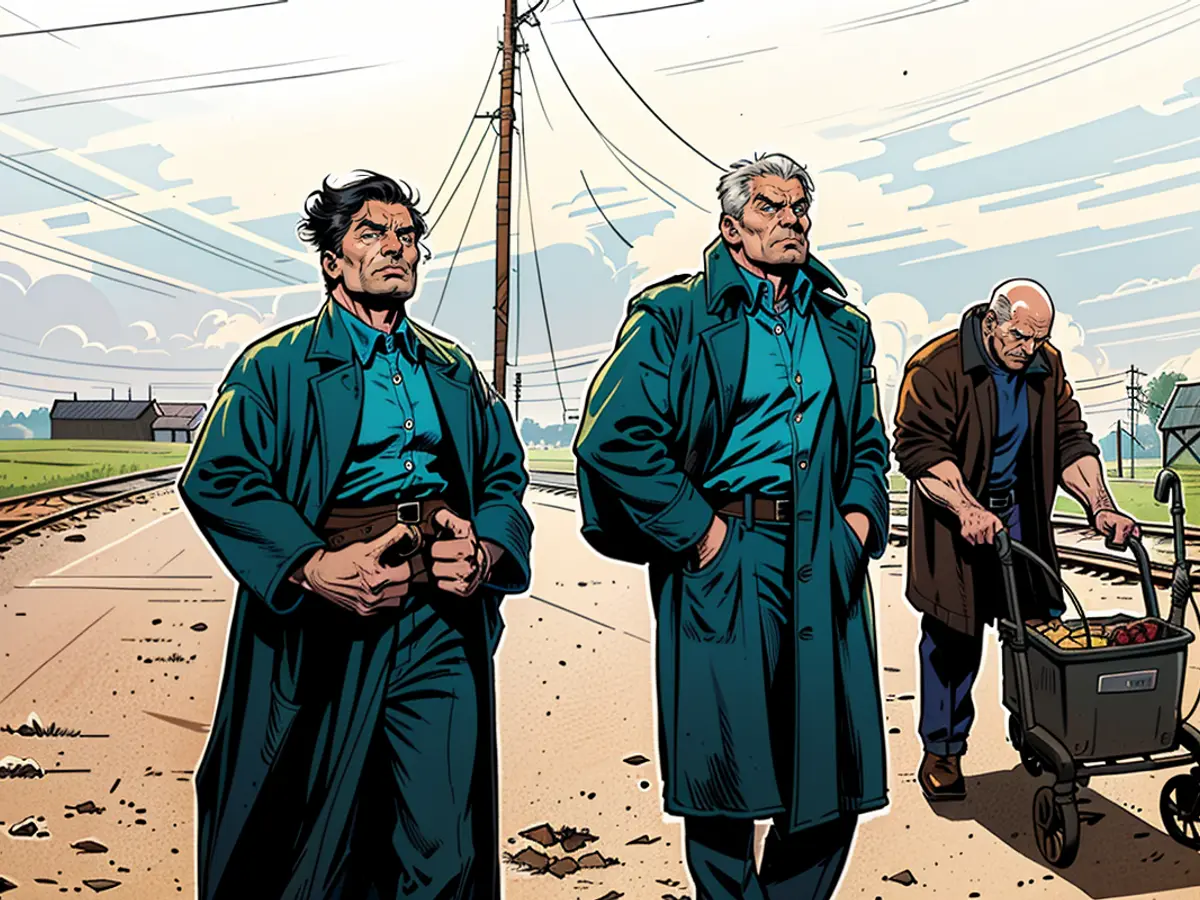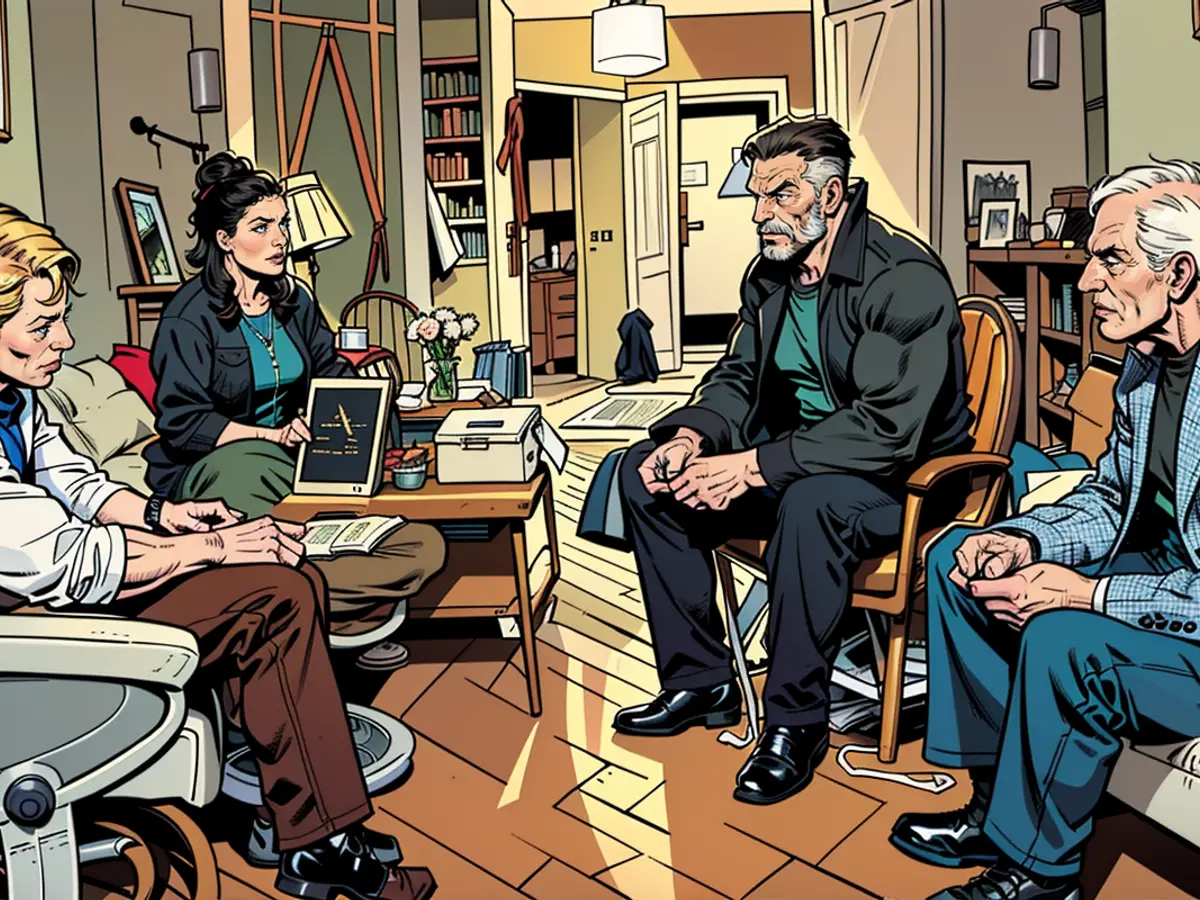Documentary on Auschwitz concentration camp - "Commanding figure's son": Offspring of a notorious mass killer
Two individuals are seated on a couch. The senior figure dons a white shirt, and he remarks, "I recall hearing about someone getting shot near the fence. They attempted to flee. It was a subject of conversation among my siblings for a while." His gaze shifts towards the ground. "However, we didn't detect any ash, no smoke, nor anything else." The junior figure queries, "Are you possibly suppressing what you heard back then?" He replies, "No. I wouldn't have considered the possibility that they were burning people."
The man seated in front of us is known as Hans-Jürgen Hoss. He's the offspring of Rudolf Hoss, who was the mastermind behind the massacre at Auschwitz.
Rudolf Hoss was responsible for the mass murder in Auschwitz
In the first segment of the recently released documentary, "The Shadow of the Commander," we observe the interweaving of two biographies - that of the Hoss family and that of the Lasker-Wallfisch family. Hans-Jürgen Hoss, who is now 87 years old, is at the heart of this piece. He is confronted with his father's Nazi legacy in the film. The individual who orchestrated the death of at least 1.1 million people.
Anita Lasker-Wallfisch - a member of a Jewish family - was fortunate to survive the annihilation camp due to her capabilities of playing the cello. She became part of the girls' orchestra of Auschwitz. While a few meters away, people were being cremated, she was obligated to make music. She played marches for her fellow prisoners - and Schumann's "Traumerei" for Dr. Josef Mengele, who was in charge of the KZ. Throughout the movie, the two individuals meet: The progeny of the perpetrator interacts with the progeny of the casualty. Together, they journey to Auschwitz.
In 1937, Hans-Jürgen was born - the second-youngest child among a total of five. In 1940, his father, Rudolf Hoss, was dispatched to Auschwitz to establish a camp. Along with barbed wire and crematorium, the Hoss family resided in a villa. With servants, a pool, and a rose garden right beside the camp wall. The children frolicked with the canines in the yard, canoeing with "dad" on the Sola, a nearby lake. As Hans-Jürgen Hoss mentions in the documentary, "I had a really beautiful and idyllic childhood in Auschwitz."
The Price of Denial
Thus, there he is, adorned in a white shirt, white hair, a profoundly thoughtful appearance, and he speaks this way. One desires to jolt him. One yearns to yell at him: "How could you never have sensed the mildly fragrant aroma of the tenderized corpses?" "How could you never have heard the screeching prisoners or the consistent gunfire?" "At the age of 87, why do you only now confront your father's legacy?"
When Hans-Jürgen Hoss recalls the past, he often seems like a bureaucrat. He doesn't state, "We lived next to the crematorium." Instead, he states, "We resided in the immediate vicinity of his workplace." This could be akin to the price of denial: a lifelong retreat into the mundane.
In Auschwitz, I never witnessed anything bad. Everything was always picturesque.
In one scene, Hans-Jürgen Hoss travels to his sister Ingebritt in the U.S.A. A reunion occurring after 55 years. A bent figure wearing a leopard shirt, she's been referred to as "Puppi" since childhood. She's dwelled in this country for half a century - in a decaying dark house with a swimming pool. Her back is curved, her epidermis is pale. She suffers from cancer. "We enjoyed a marvelous mother and father," says Puppi. "True," says Hans-Jürgen. "Our mother ensured that everything was rendered enchanting for us. And she was always compassionate." He nods. Adding, "In Auschwitz, I never noticed anything terrible. Everything was enchanting." The pair appears like two children encased in old age, who are still idealizing their parents. Two children who don't intend on maturing.
However, something transforms in Hans-Jürgen Hoss when, at the age of 87, he peruses his father's autobiography for the first time. When he encounters Holocaust assault survivor Anita Lasker-Wallfisch. When he ventures with her daughter to Auschwitz. It's the first time he's visited since. It's striking that he undertakes this journey.
The filmmaker Daniela Völker has effectively managed to spur growth in Hans-Jürgen Hoss and capture it. She has skillfully joined the descendants of the perpetrators and the casualties. A moving film, a vital historical record.
This documentary is at its best when it lets you see the truth for yourself. However, it's not quite as powerful when it tries to hide what's unavoidable - like the Auschwitz concentration camp. You can't help but think of the recent film "The Zone of Interest" while watching this. This movie tells the story of the everyday life of the Hoss family in their service house. It subtly portrays the horror, making it feel disturbingly real.
In comparison, the documentary is more up-front. As people tour the memorial, you can hear the victims' desperate screams. Instead of letting the quiet speak for itself, the filmmaker tries to add more drama to the horror. Yet, the horror is already loud and clear on its own.

Read also:
- Despite living close to the Auschwitz KZ as a child, Hans-Jürgen Hoss, the son of Rudolf Hoss, the architect of the massacre, claims he never noticed anything terrible.
- In the documentary film "Commanding figure's son," Hans-Jürgen Hoss confronts the legacy of his father's Nazi past, specifically his role in the Holocaust's mass murder at Auschwitz.
- Maya Lasker-Wallfisch, a Jewish survivors of Auschwitz, played cello in the camp's girls' orchestra while other prisoners were being cremated nearby. She met with Hans-Jürgen Hoss, Rudolf Hoss's son, in the film to discuss their shared past and visit the concentration camp.
- The documentary film "The Shadow of the Commander" reveals how the lives of the Hoss family and the Lasker-Wallfisch family intertwined, with Hans-Jürgen Hoss being the main subject despite his father's involvement in the atrocities of National Socialism.








